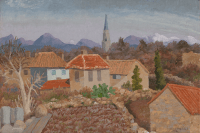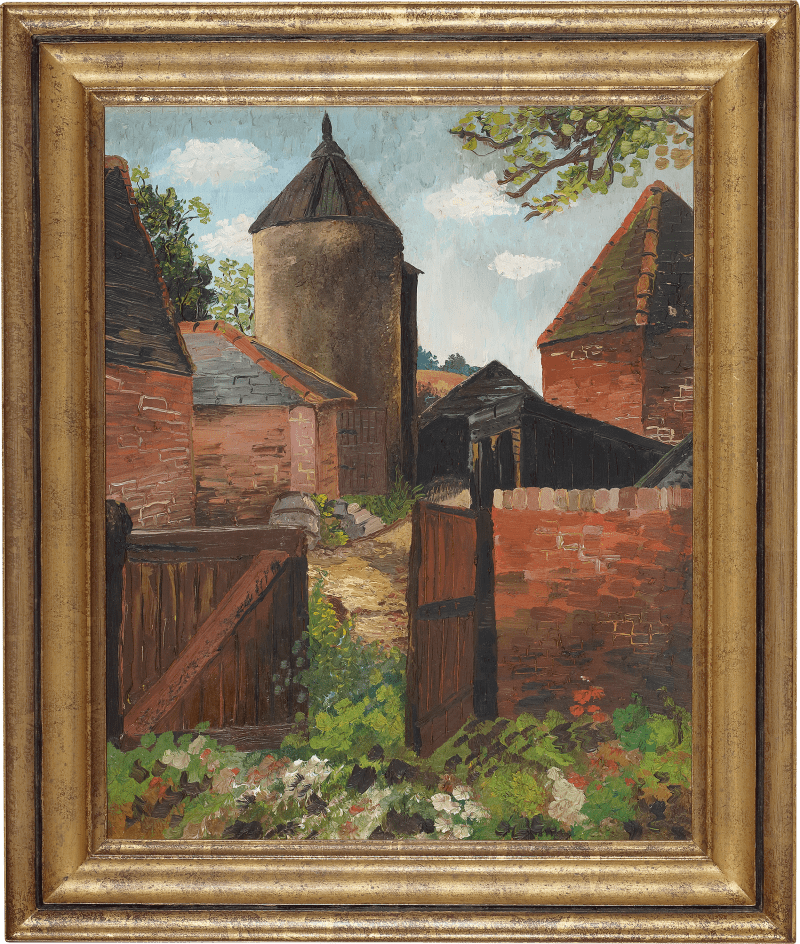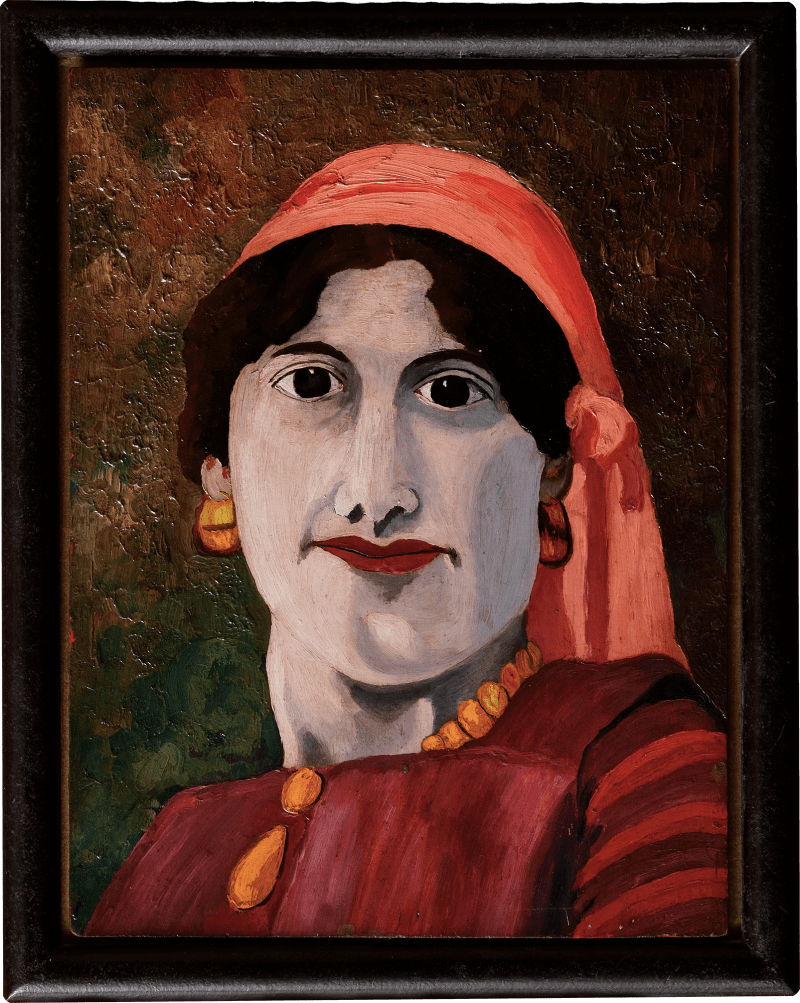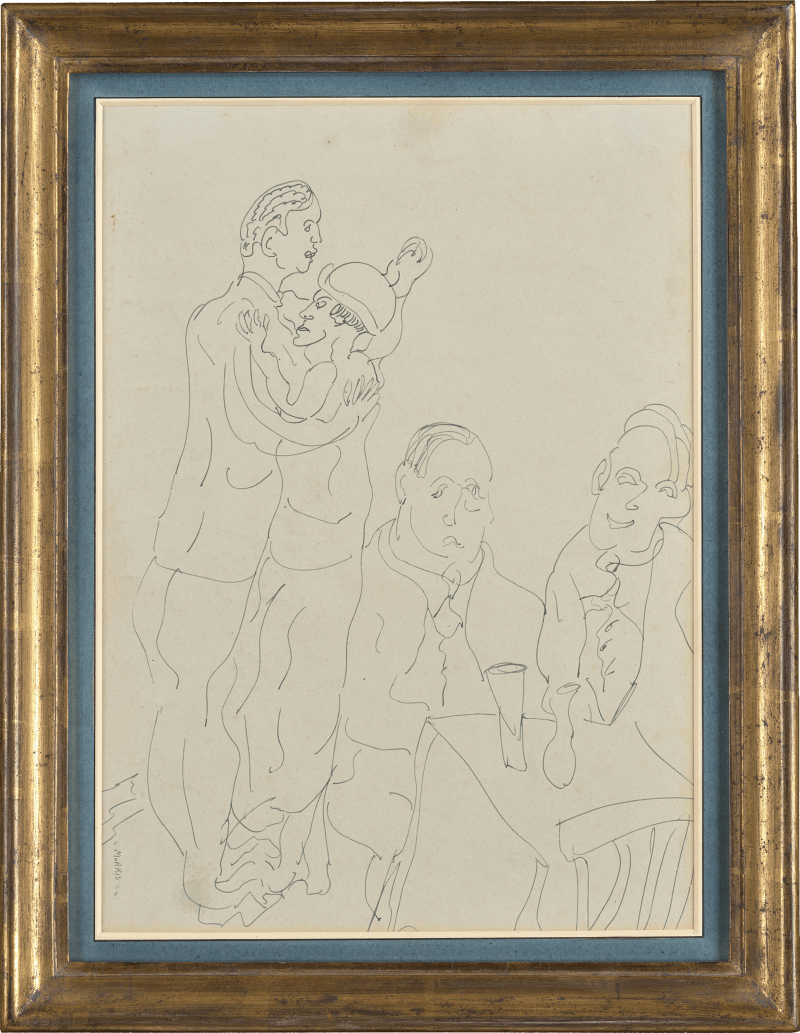The present painting is inspired by Morris’s travels around the Mediterranean coast. Morris travelled extensively throughout his life and he is known to have spent time in Turkey during 1970-1971.
Morris was one of the most original British painters of the twentieth century. His bright and often busy compositions of flowers, birds, and natural landscapes, both abroad and in Britain, demonstrate a sensitive and endearing naivety, whilst simultaneously capturing the essence of natural beauty. A lifelong plantsman, he brought back unusual species from his travels and became an acclaimed breeder of irises which he grew at the home and art school he shared with Lett, Benton End in Hadleigh.
Although he spent the majority of his life in England, Cedric Morris was proud of his Welsh heritage, having been born to Welsh parents in Sketty, Swansea in 1889. Morris inherited the Morris baronetcy from his father George Lockwood Morris, 8th Baronet on his death in 1947.
Initially, Morris intended...
The present painting is inspired by Morris’s travels around the Mediterranean coast. Morris travelled extensively throughout his life and he is known to have spent time in Turkey during 1970-1971.
Morris was one of the most original British painters of the twentieth century. His bright and often busy compositions of flowers, birds, and natural landscapes, both abroad and in Britain, demonstrate a sensitive and endearing naivety, whilst simultaneously capturing the essence of natural beauty. A lifelong plantsman, he brought back unusual species from his travels and became an acclaimed breeder of irises which he grew at the home and art school he shared with Lett, Benton End in Hadleigh.
Although he spent the majority of his life in England, Cedric Morris was proud of his Welsh heritage, having been born to Welsh parents in Sketty, Swansea in 1889. Morris inherited the Morris baronetcy from his father George Lockwood Morris, 8th Baronet on his death in 1947.
Initially, Morris intended to go into the army but, after failing the assessments due to a complication incurred during a surgical procedure when Morris was a child, went to Canada to work as a farm hand. When he returned to England he enrolled at the Royal College of Music to study singing but then later decided to pursue art independently. With the outbreak of World War One, Morris was unable to fight due to health reasons but contributed to the war effort by training horses, which would be sent to the front line, until 1916.
From 1917 until 1920 he lived in Newlyn, Cornwall, as part of the artistic community that had settled there following the extension of the Great Western Railway in 1877. It was in Newlyn that he met his life-long partner Arthur Lett-Haines (1894-1978), who was already married, and despite several other relationships throughout their lives, Morris and Lett-Haines lived happily together for sixty years. The couple lived together in Paris, London and then Hadleigh in Suffolk and spent much of their time travelling, independently and on occasion together. Travel was immensely important to Morris and he would make regular trips abroad during the months (November – March) in which the East Anglian School of Painting and Drawing (EASPD) was closed to students. Morris was a prolific painter whilst abroad and it is through these works that we can gain access to his movements as a traveller and observer of foreign cultures and landscapes. Morris’ eyesight began to steadily deteriorate in the 1970s until he could no longer paint. This work, painted in 1972, is one of the last works that he completed and reveals his enduring dedication to a simplified, direct style of painting.











